
Plan your visit
Indiana’s Oldest Latino Hoosier Tradition Turns 100
August 22, 2024
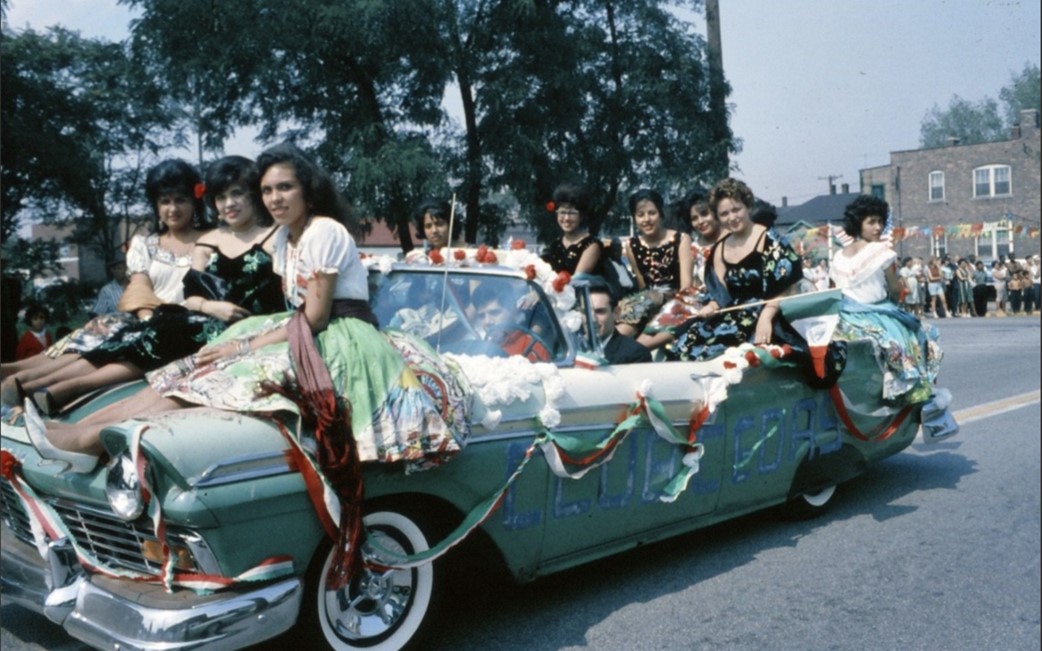
Sunday, September 15, 2024, will be the 100th anniversary of the Fiestas Patrias parade in Indiana Harbor (East Chicago). One hundred years ago, this Mexican American community, coupled with the smaller community in Gary, gathered to celebrate Mexico’s Independence from Spain (1821). However, this inaugural Indiana parade had a deeper meaning. The early Mexican American community was taking refuge in their newfound Indiana home while recovering from post-revolutionary events. From 1910-1920 Mexico had another revolution, this time it was for economic equity, secularism and land reform. This would be followed by smaller battles (Cristero War) well into the 1920s. This war was in opposition to Calles Law, a secular anticlerical article that was amended to the Mexican Constitution in 1917. The political instability in Mexico during these years was among one of the factors propelling emigration into the United States.
From 1918-1924, population demographic dramatically shifted, from single male workers to families with some from Mexico’s middle class. They were one of many ethnic immigrant groups that made up most of the city’s population. Despite the Mexican American community’s social stratification, they were uniformly political and religious refugees. Because of this, they were deeply patriotic, not only to Mexico but also to the country they now called home. This annual celebration was not only commemorating Mexico’s Independence from Spain, but it was also a celebration of a newfound independence and autonomy, right here in America’s heartland.
In the early 1920s, Fiestas Patrias celebrations were simple with a banquet and a quick car parade through town. As the population grew to several thousand individuals, so did the celebration. In 1924 East Chicago’s Mayor, Frank Callahan issued a permit for a street parade. National Hall, located at 139th and Butternut Streets, was elaborately prepared for a banquet with dignitaries and a dance in the days leading up to the parade. Businesses and homes on Block, Pennsylvania and Washington Avenues were festively decorated with flags and bunting in the colors of Mexico and the United States. After significant growth in the female population, in 1926, the most iconic symbol of the parade was established with the crowning of the first-ever Queen of Fiestas Patrias.
This parade is a hallmark of Indiana’s many cultural traditions and it is the state’s oldest and longest-running Latino Hoosier celebration. Here is a photographic look back from 1926-1986, decades rich with culture and tradition.
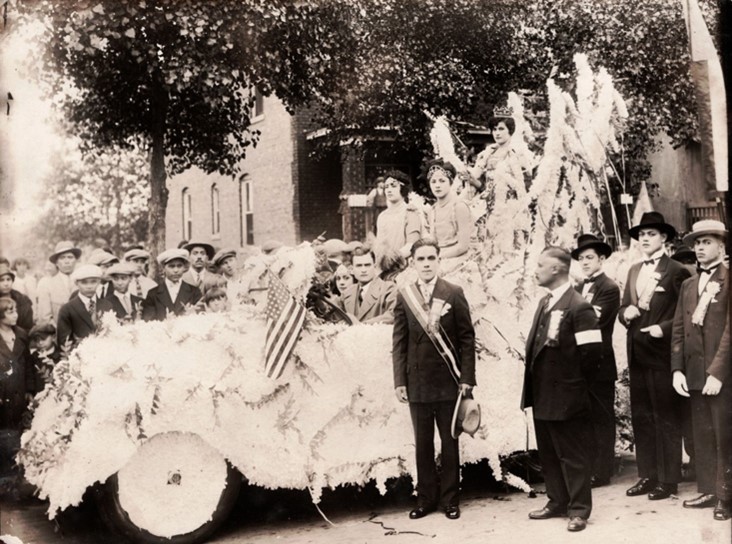
1926 – First Queen of Fiestas Patrias, Maria del Refugio Ramirez (later Godinez) she was a resident of Indiana Harbor with her parents from 1925-1928 before returning to Mexico. Later she returned to Indiana Harbor in 1947 and lived well into her 100s. Sandra Valdes, IHS.
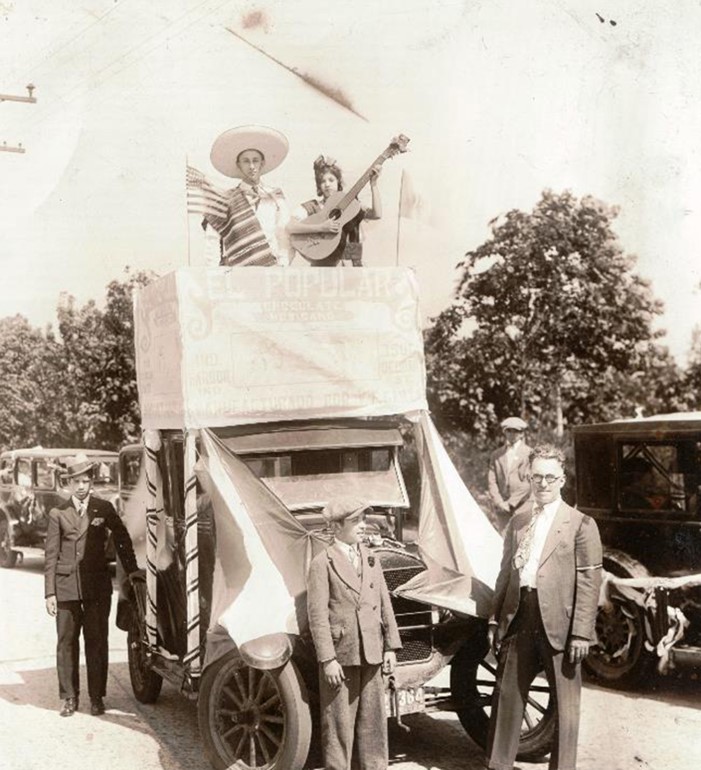
1928: V.F. Garza (man with glasses on the far right) was a prominent business owner from Monterrey, Nuevo Leon, MX, living in Indiana Harbor. This is his parade float promoting his food business, El Popular (now known as El Popular, Inc.). It was established in 1925 and is Indiana’s oldest Latino company, still owned and operated by the Garza family. IHS.
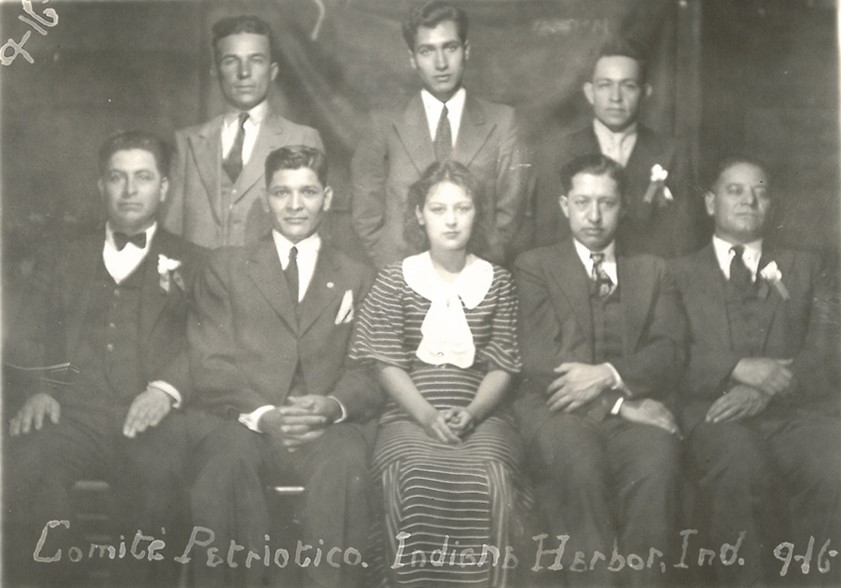
1930s: The parade and festivities were organized by members of various mutualistas (mutual aid societies) and other cultural groups who formed the Patriotic Committee. IHS
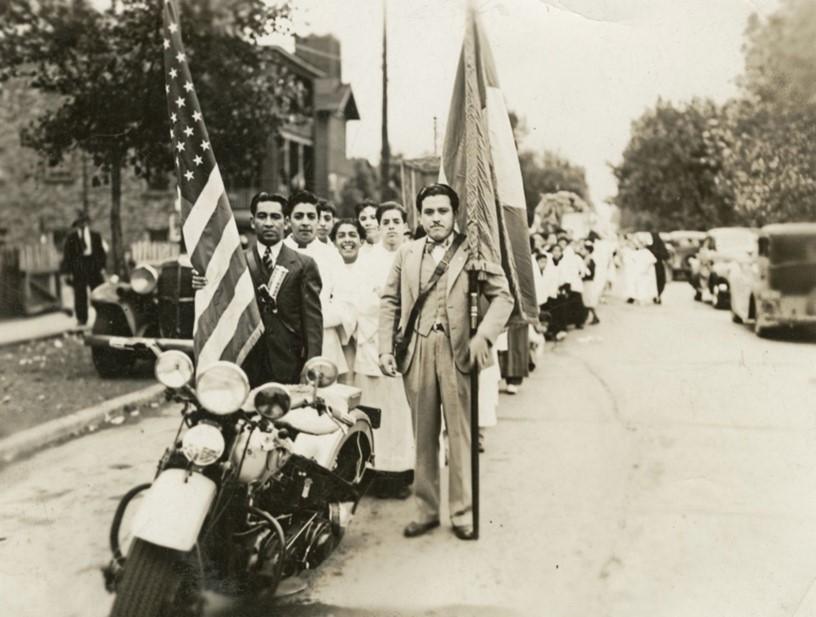
1940 – Technically, this is not a parade photo. But on September 15, Parishioners of Indiana’s First Mexican Roman Catholic Church, Our Lady of Guadalupe (Nuestra Señora de Guadalupe), celebrated mass and closed the doors of its first building at 3855 Pennsylvania Avenue. They led a half-mile procession to their larger and newly built church at 3520 Deodar Street. Peter Ayala, IHS.
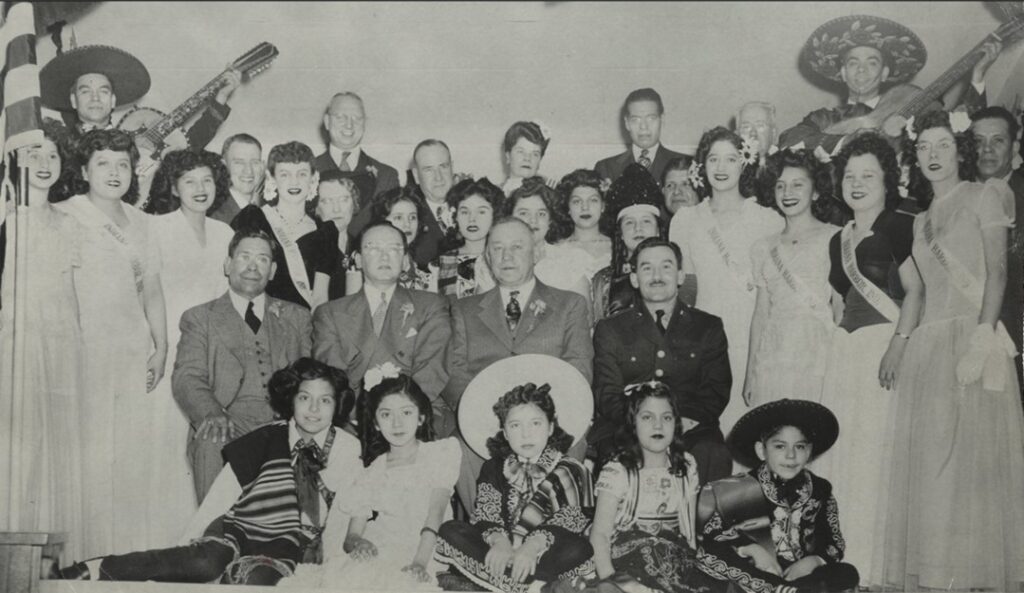
1940s: Fiestas Patrias celebration with locals and Mexican dignitaries. IHS
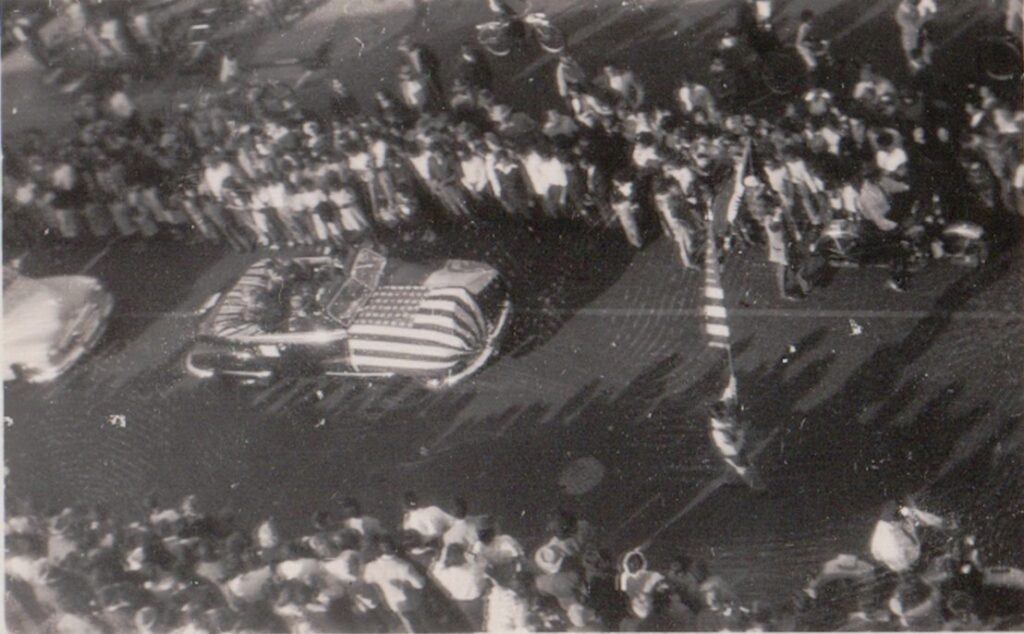
1947: A car is draped with the country flags from Mexico and the United States. The flags of both countries were always presented side by side in all Fiestas Patrias celebrations. Photo courtesy of the author.
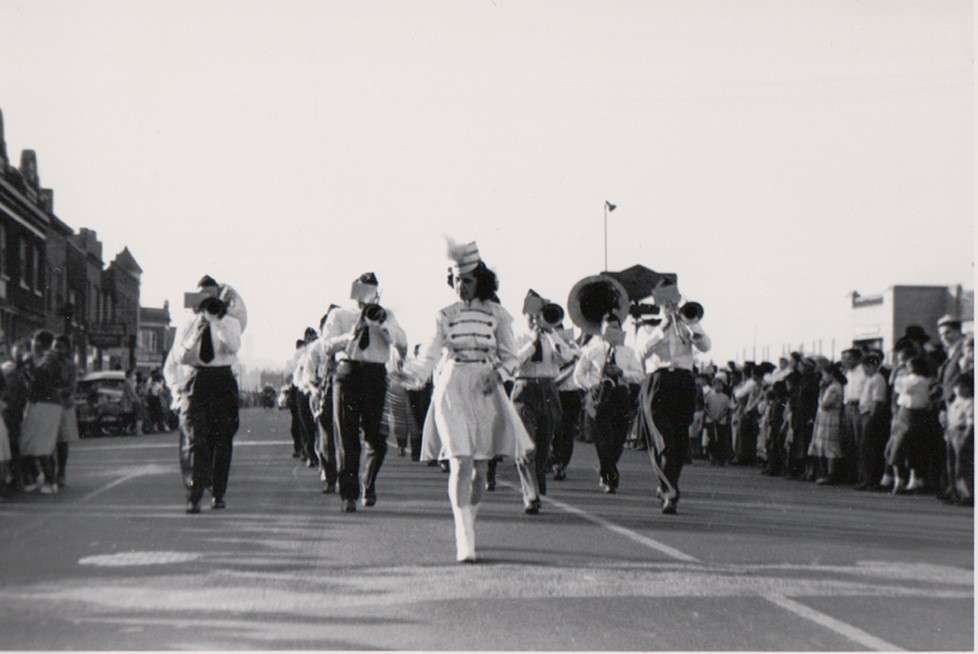
1955: A majorette leads a military band during the parade procession. Photo courtesy of the author.
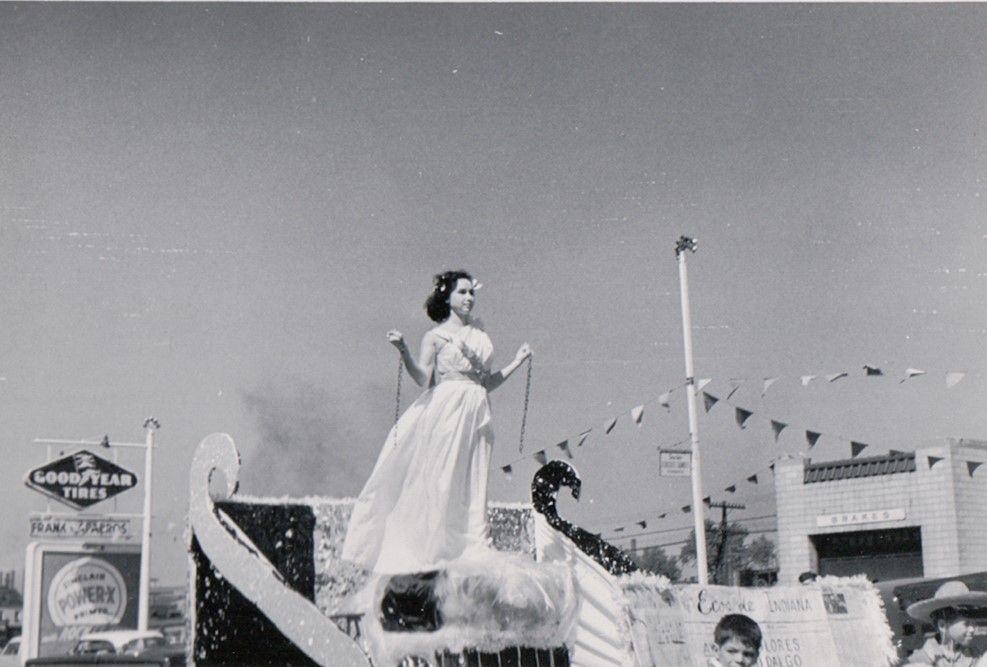
1955: A young woman holds broken chains, symbolizing Mexico’s independence from Spain. Photo courtesy of the author.
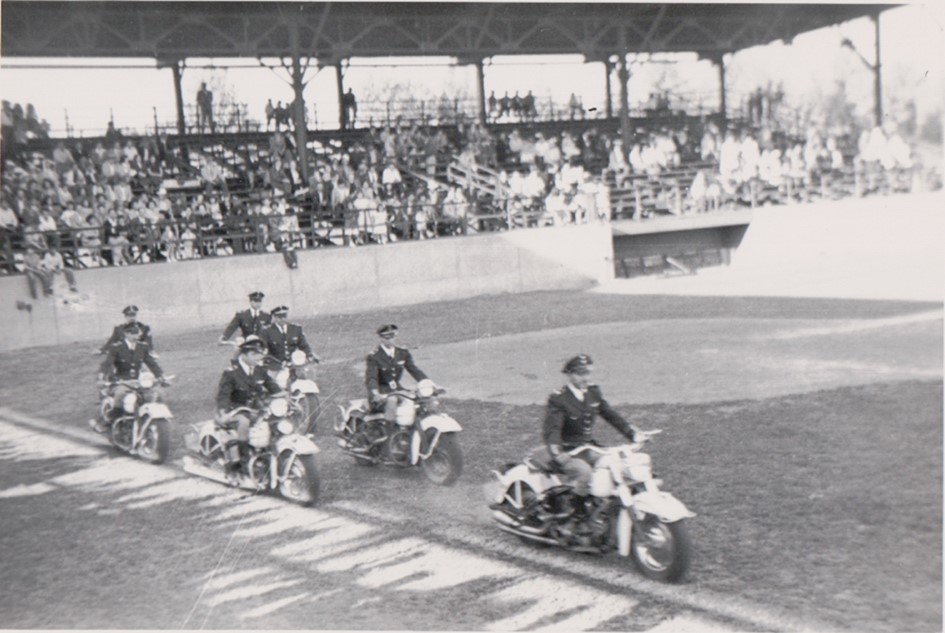
1955: In the 1940s and 1950s an acrobatic motorcycle troupe were regular parade participants and performers at post parade celebrations at Block Stadium. They were based out of Monterrey, Nuevo Leon, Mexico. Photo courtesy of the author.
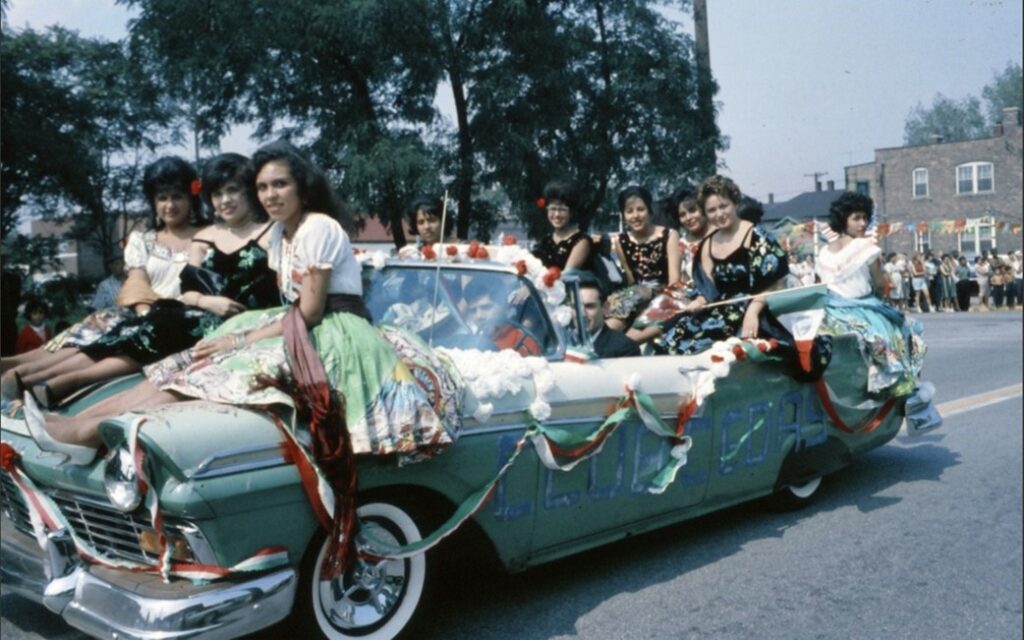
1960S: Ten women sit on a festively decorated car for the annual parade. Photo courtesy of the author.
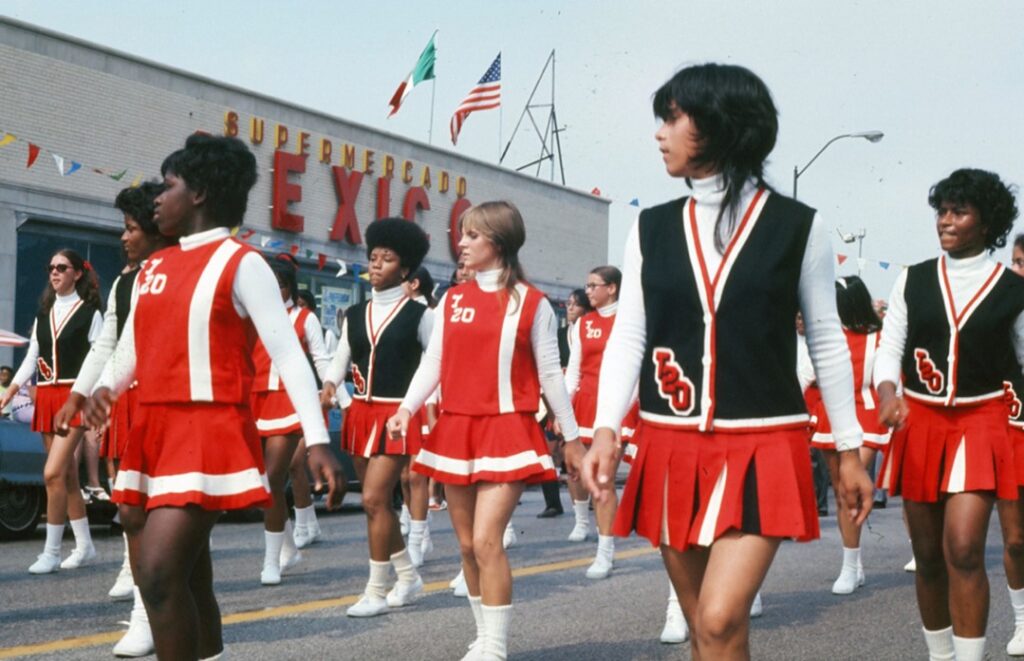
1970s: East Chicago Washington High School’s Top Twenty dance troupe. The Top Twenty was a modern dance troupe, found and led by Physical Education Teacher, Mildred Ball. Mildred would later be inducted into the Indiana Basketball Hall of Fame and the Gary Sports Hall of Fame. Photo courtesy of the author.
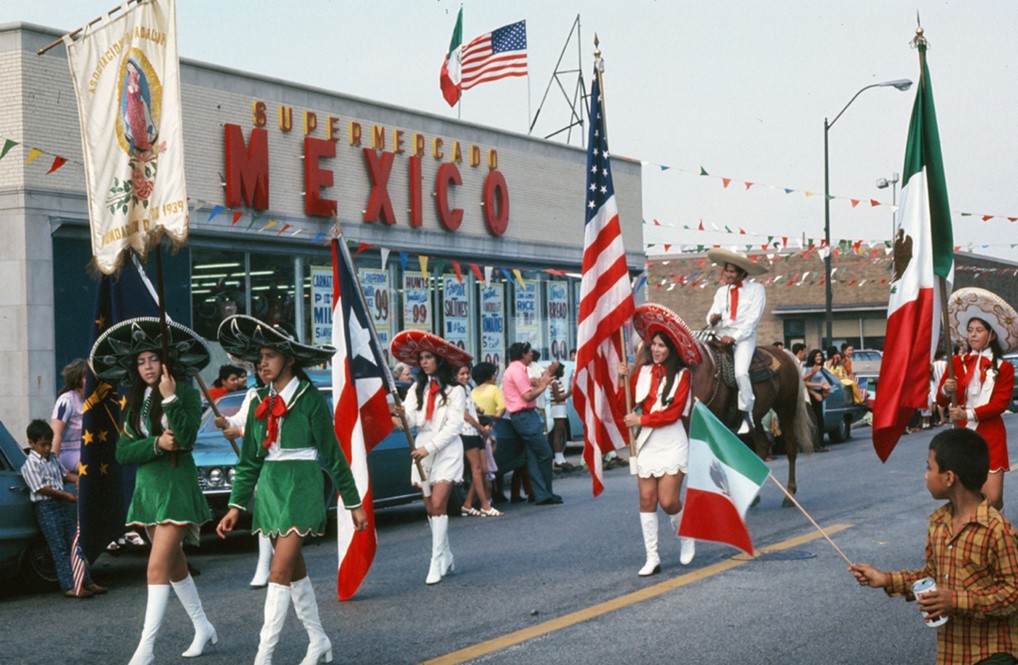
1970s: Young women holding the flags of Puerto Rico, the United States, and Mexico. They are led by a banner recognizing an association dedicated to Our Lady in Guadalupe, established in 1939. Photo courtesy of the author.
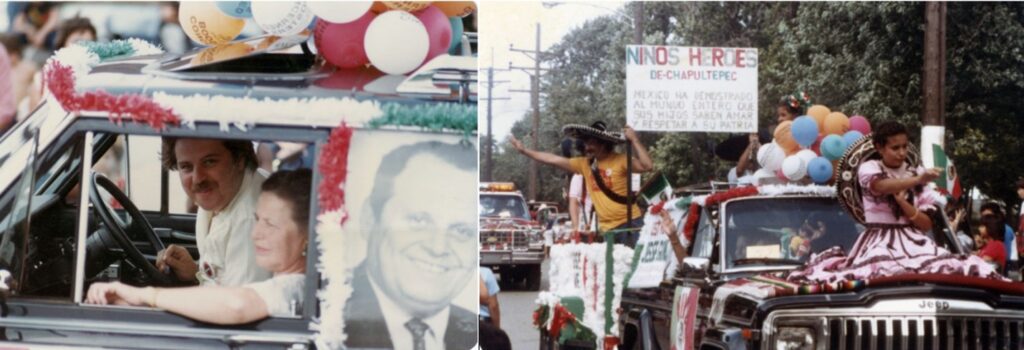
1980 or 1981: After the death of city councilman Jesse Gomez, Sr. in August 1979, this float was dedicated to his memory. Jesse’s widow, Rosemarie Gomez, is chauffeured by her son Armando “Mandy” Gomez. Rosemarie finished her late husband’s city council term after his death in 1979. Rosemarie was also a former Queen of Fiestas Patrias in 1940, after which the parade took a hiatus until the end of World War II. This made her the longest-serving queen in the history of Fiestas Patrias. Rosemarie Gomez, IHS.
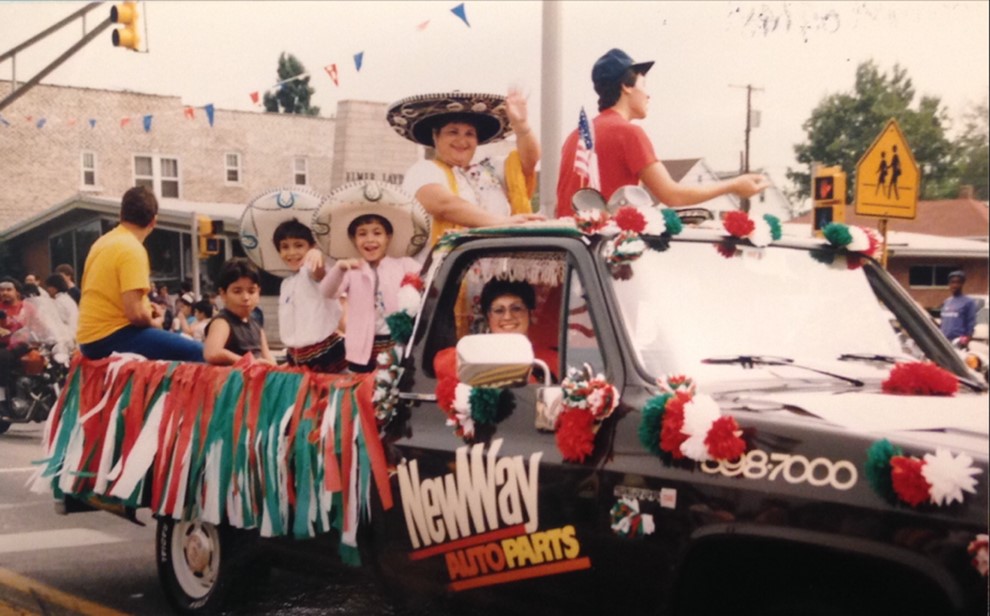
1986: The author (white hat) with her sister on a parade float for New Way Auto Parts. Photo courtesy of the author.
Special thanks to the Ayala, Castillo, Figueroa, Garza, Gomez, Medina, and Valdes families for the photos and their contribution to Indiana History.








